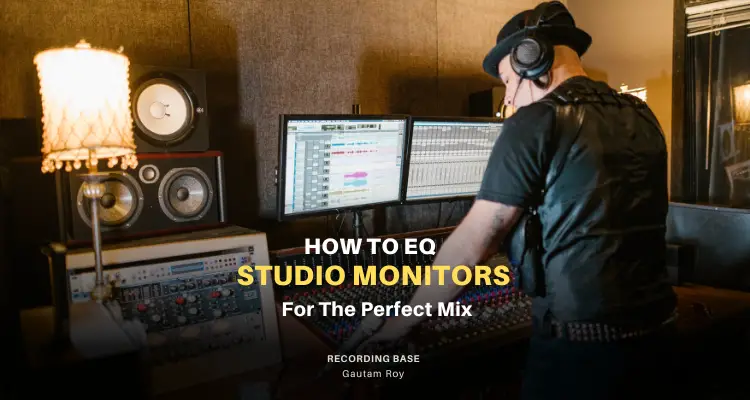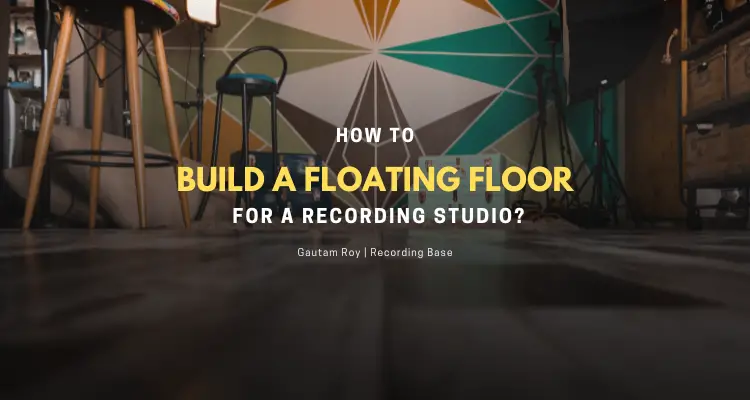If you’ve done acoustic treatment in your room, BUT, still struggling with low-frequency sound reflections then this guide is written for you.
In this guide, you will read about how to get rid of low-frequency reflections in your rooms.
When it comes to acoustic treatment, low-frequency reflections are such a mess. We can’t mitigate them by putting in soundproof curtains or acoustic panels.
You need some other things to properly treat low-frequency reflections. This guide will help you with that.
If you want to know more about acoustic treatment, you should also read this guide.
SO, without wasting any more time let’s dive into the guide.
Table of Contents
- 1 Reasons Behind Low-Frequency Reflection in Rooms
- 2 Why Should You Control Low Frequency Reflection in Room?
- 3 Analysing Room Acoustics
- 4 2 Ways to Minimize Low Frequency Reflection in Rooms
- 5 5 Steps: How to Get Rid of Low Frequency Reflection in Rooms
- 6 Conclusion: Getting Rid of Low Frequency Reflection in Rooms
- 7 FAQs
Reasons Behind Low-Frequency Reflection in Rooms
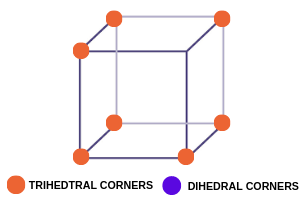
First off, we should learn about the reasons for low-frequency reflection in rooms.
See, there are several reasons for low frequency reflection in rooms.
Disclosure: This post may contain affiliate links, which means we may receive a commission if you click a link and purchase something that we recommended. Read more about Affiliate disclosure here.
But the biggest reason is,
Low Frequency Sound Travels More Then Mid and High Frequencies
The frequency of a sound wave is inversely proportional to the wavelength of the wave, ie; higher frequency sound waves have shorter wavelengths and lower frequency sound waves have longer wavelengths.
As low-frequency sound waves have a longer wavelength they have more remaining energy with each new wavelength produced.
That’s the main reason why low frequency sound waves travel more than mid and high frequencies.
Even, low frequencies can travel through the wall. That’s why you can hear “Boom-Boom” when your neighbor plays his Hi-Fi system.
Room Resonance
The second reason for low-frequency reflections in your room is Room-Resonance.
Sound Resonance is a phenomenon in which the frequency of sound matches the natural frequency of the object that comes in front of the sound wave.
This increases the amplitude of the sound wave and you will listen to a resonant frequency oscillating at a much higher amplitude than the original sound wave’s amplitude.
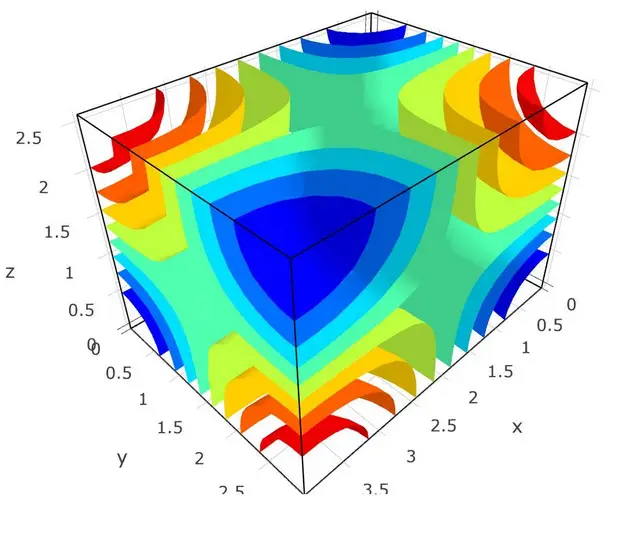
There are some areas in your room where air velocity is minimum and air pressure is maximum. These areas create the Sound Resonance phenomenon, mostly, in lower frequencies.
This is called Room Resonance.
That’s one of the main reasons for low frequency sound reflections in your room.
I will give you a solution to mitigate Room Resonance in this guide.
So keep reading.
Shape of Room
Shape of the room also plays an important role in increased low frequency reflections. Generally, we have rectangular shape rooms.
Now see this image,
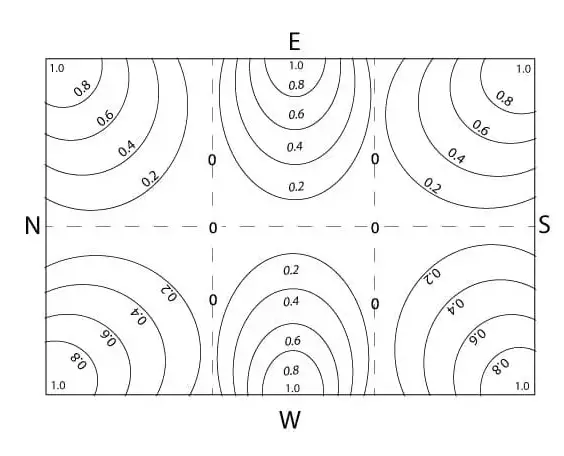
In the above image, I have shown you a rectangular room with the corners as the most common room resonance areas.
So, rectangular-shaped rooms are the most common problem of low-frequency reflections.
That’s why auditoriums are designed in hexagonal or circular shapes.
Don’t worry, I don’t ask you to demolish your room and build a new room as per acoustic needs.
The purpose of this article is to give acoustic treatment to your room without breaking your bank.
Further, I will give you some best tips on how to do that but first, you should ask yourself,
Why Should You Control Low Frequency Reflection in Room?
The reason for controlling the low frequency sound reflection may be different for different people.
Some people, don’t want the disturbing sound produced by their neighbor’s hi-fi system when they are sleeping in their bedroom.
Some professional people who run recording studios, don’t want disturbing sound reflections during the recording and mixing sessions.
In this section, we’ll take a look at both scenarios.
First off,
Recording studios
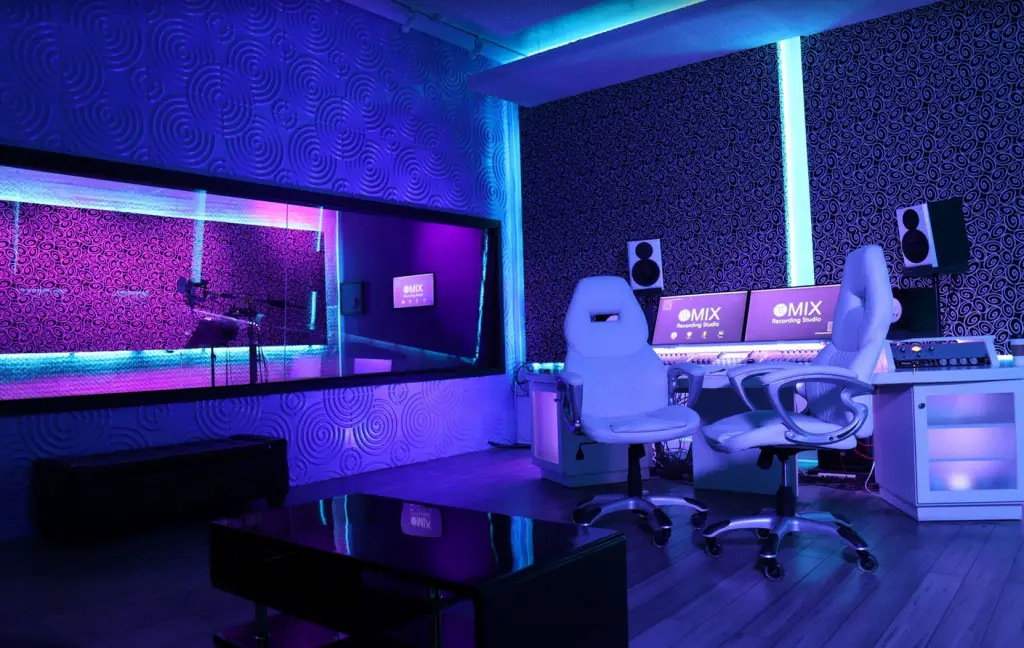
Recording studios need professional acoustic treatment. Since the mics used in recording studios are highly sensitive, you need to minimize the sound reflections otherwise the mics may catch those background noises.
Also, when you are monitoring or mixing your projects, you don’t want unwanted noises coming to your ears mixed with the original sound.
This could ruin your mixing.
These are the reasons why you need to give acoustic treatment to recording studios.
Bedroom
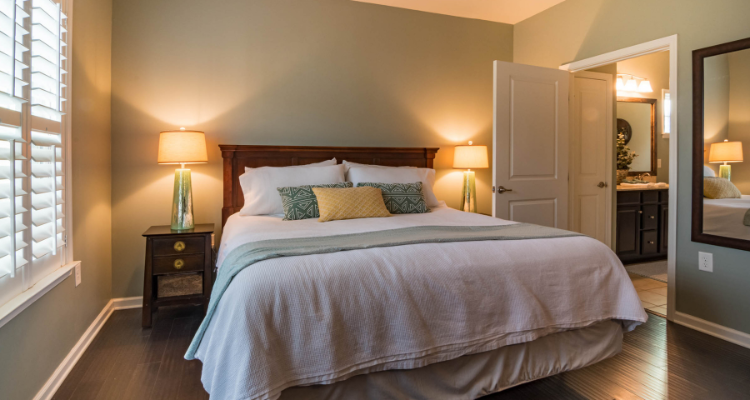
Bedrooms should also be acoustically treated otherwise you won’t get a good sleep.
Do you know, low-frequency sounds can change your mood even if they are un-listenable?
Human mind reacts unnaturally when comes to contact with low-frequency sounds. That’s why you need to treat your bedroom for absorbing low frequencies.
Or you might not wake up fresh.
Analysing Room Acoustics
To minimize Low-Freq reflections you should first analyze how much and where the reflections are occurring in your room.
Generally, Low-Frequency sound waves are trapped at the corners of a room.
I have already shown you above that if your room is rectangular shaped then Sound Resonance phenomenon will happen on the corners of the room.
As a result, you will listen to low-frequency sounds with higher amplitude.
So, you should first analyze the reflections before applying any acoustic treatment to your room.
You can do this in two ways.
First,
Analyzing by Ears
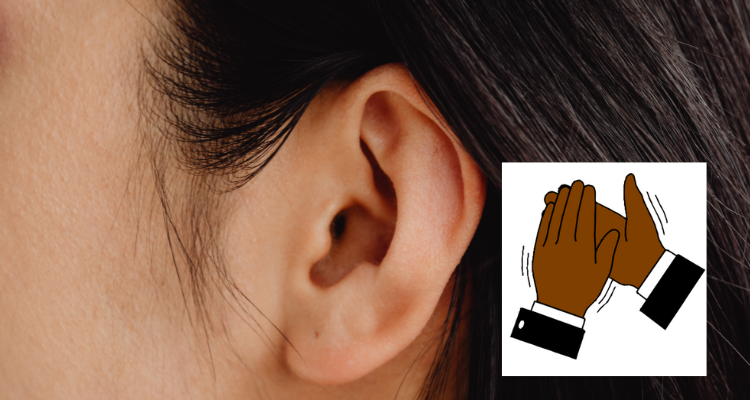
Human ears are very sensitive to sound waves. It can catch sound anywhere from 20Hz to 20kHz.
You can use your ears to listen to the reflections in the middle of the room and then at the corners.
You should listen carefully if the amplitude of the low frequency sound wave is increasing at the corners.
If the increment is quite more than the middle of the room, then your room needs low frequency acoustic treatment.
If you already have an acoustically treated room you can do this as well to listen to if any low-freq reflections occur at the corners of the room.
If yes, then your acoustic treatment needs a low-freq add.
But, the problem with naked ears is they cannot give you the exact increment in amplitude on the scale.
That’s where you need something to measure the difference in amplitude at the corners.
So, the second one is,
Analyzing by SPL Meters
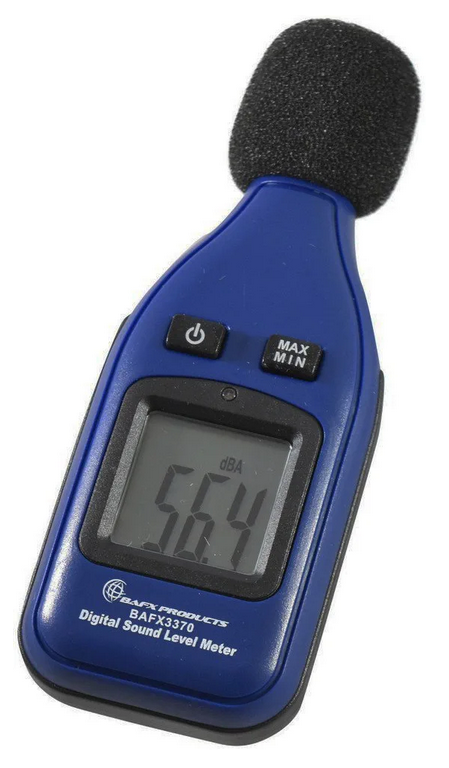
SPL meters are Sound Pressure Level meters that will give you the exact value of the amplitude of the sound.
You will find SPL meters for a few dollars online. Some work great but some are just crap.
So I have a better recommendation for you that you can buy from here.
Here is the step-by-step guide to measuring amplitude using SPL meter.
- First, you should first check the SPL in the middle of the room.
- Write down the readings.
- Now move to one corner of the room and check the SPL.
- Note the reading with the corner name.
- Do the same process for all the corners, even the upper corners of the room. You can use a chair or table to do that.
- Write down all the readings and compare with the middle room reading.
You will see that some corners have higher readings than others. These ones need more acoustic treatment than the others.
Now, let’s see what are the ways to minimize the low frequency reflection in rooms.
2 Ways to Minimize Low Frequency Reflection in Rooms
In this section, we’ll discuss two theories that are used to treat room reflections along with the practical solutions.
The two acoustic treatment theories are Absorption and Diffusion.
1. Absorption
When sound energy is encountered with certain materials, a part of the energy is transformed into heat and other types of energy. This is just the opposite to reflecting of energy.
Also, some part of the sound energy is transmitted through the absorbing material and trapped behind.
This phenomenon is called the absorption of sound energy.
If we use these certain materials in a certain quantity according to the SPL readings, we can trap the bass and there will be minimum low-freq reflection.
2. Diffusion
The other theory is diffusion. In this, the sound energy is encountered with a diffuser which distributes the sound energy in different directions, and the sound energy losses its amplitude.
Lowering the amplitude minimizes the reflections too.
All acoustic treatment applications work on these two theories.
Now, you know the theories behind the acoustic treatment, it’s time to discuss the solutions.
Bass Traps for Absorption
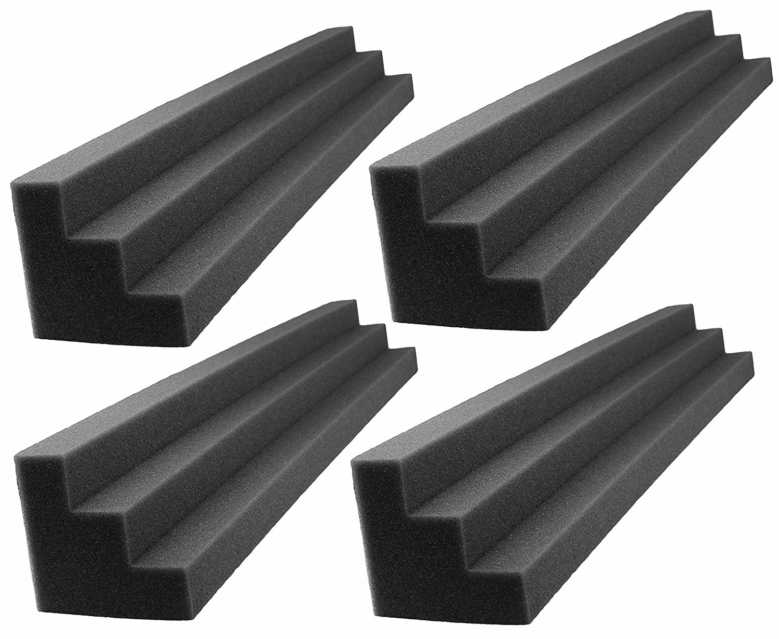
For low frequency sound absorption, bass traps are used in corners of the room. These are built with sound-absorbing materials such as high-density foam with wood and glass wool.
You can buy different types and sizes of bass traps online from here.
Now, if you had the SPL meter readings, after installing the bass trap you should compare the results with the former readings.
This will guide you if the bass traps are working fine or not.
Diffusers For Diffusion
Diffusers are generally used on walls in front of the sound source.
So, if you have a recording studio, then you should put the diffuser on the wall below your chair.
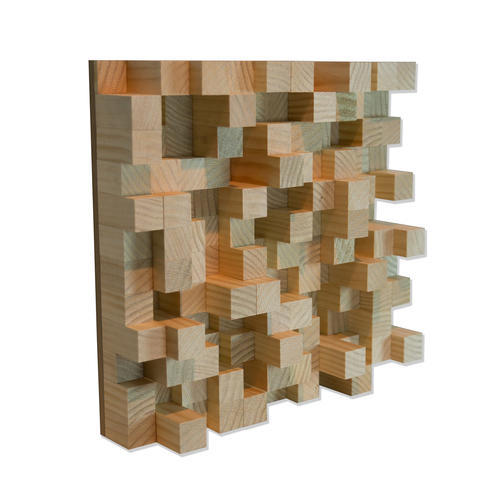
However, you can also use diffusers in your bedroom to minimize the reflections. They work great when it comes to low-frequency reflections.
Diffusers are generally made of wood. The surface is not even but cut into shapes with different depths and sizes.
When sound waves encounter these shapes, they scatter in different directions, and the sound wave losses its amplitude.
The best thing about diffusers is they look great and are low maintenance which makes them great acoustic treatment materials not just for recording studios but bedrooms and living rooms too.
You can buy diffusers from here.
5 Steps: How to Get Rid of Low Frequency Reflection in Rooms
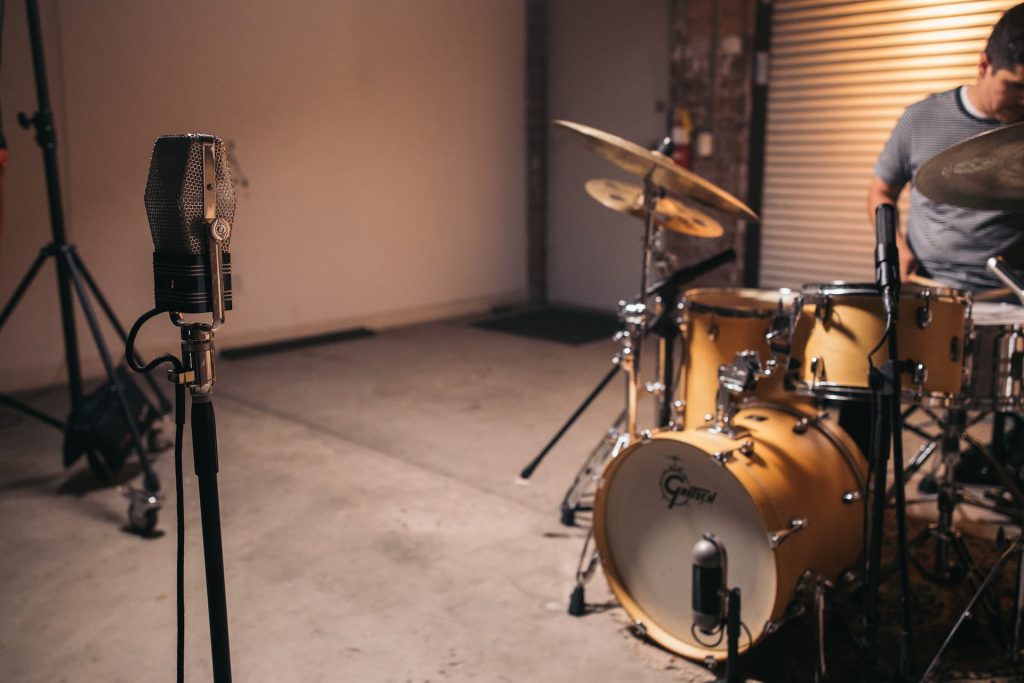
Now, that we know the reasons for low-frequency reflections in the room, analysing the affected areas in the room, and 2 ways to minimize these sound frequencies, it’s time to get into the 5 step guide to get rid of Low-Frequency reflection.
Step 1 – Identify the Cause of Low Frequency
First off, you should identify the cause of low-frequency sound reflection. It may be your room structure, the wall finish, or any other thing that is participating in the room resonance.
Step 2 – Find the Exact Location of LF Noise
So, when you know the reasons behind LF Noise, you should identify the affected areas.
In a rectangular shape room, most of the low-frequency problems occur at the corners of the walls.
In the corners where air velocity is minimum and air pressure is maximum sound resonance occurred.
Point out the locations and measure the SPL with SPL meter. Write down the sound pressure levels.
Step 3 – Choose The Right Technology to Treat The Problem
Now, you have to adopt the right technology to treat LF noise problems in the room. I have already discussed there are two ways to treat LF noise.
First is Absorption and the second is Diffusion.
You can adopt one or both according to your needs.
Such as for the room corners bass traps are ideal. They absorb the sound energy and minimize room resonance.
For the middle of walls, Diffusers are ideal as they scatter the sound waves in odd directions and prevent resonance.
Step 4 – Install the Technology
Now, it’s time to install the technology. You should follow the user manual provided with the wall diffusers and bass traps to properly install them in your room.
Step 5 – Analyse The Results
After installing bass traps and diffusers, measure sound pressure levels at all the areas with SPL meter and compare them with the previous readings.
If it’s satisfactory, you can enjoy soundproofing, if not, you should tweak the placements, and ensure that the number of bass traps and diffusers is sufficient for the room.
Conclusion: Getting Rid of Low Frequency Reflection in Rooms
Getting rid of low frequency reflection in rooms is not rocket science. you need some basic physics and how sound waves work.
Now, read my article and apply all the suggestions and you will definitely feel the difference.
If you are facing ay problem soundproofing your room, let me know in the comments. I will answer all your queries.
FAQs
Why people are so sensitive to low frequency noise?
Low frequency sound affects our mood and efficiency at work. However, we can’t hear below 20Hz, our mind can catch this and behave negatively to it. That’s the reason people are so sensitive to low frequency. Low frequency sound interrupts the work of our heart which causes a negative mood. This will interrupt our sleep also.
What is the most common cause of low frequency vibration?
However there are several causes of low frequency, the most common are music systems and other electronic devices. The subwoofer your neighbor is using for his entertainment can be one of the top reasons for LF noise in your room.
What are the cheap ways to improve room acoustics?
Bass traps, diffusers, acoustic panels, soundproof curtains, etc are the cheapest ways to improve room acoustics. A room full of things can also help absorb sound reflections.
Why do low frequencies go through walls?
Low-frequency sound carries higher energy with a longer wavelengths. It has sufficient energy to shake the wall a little bit. Which will transfer the energy to the air behind the wall. That’s why it can travel through the wall.



